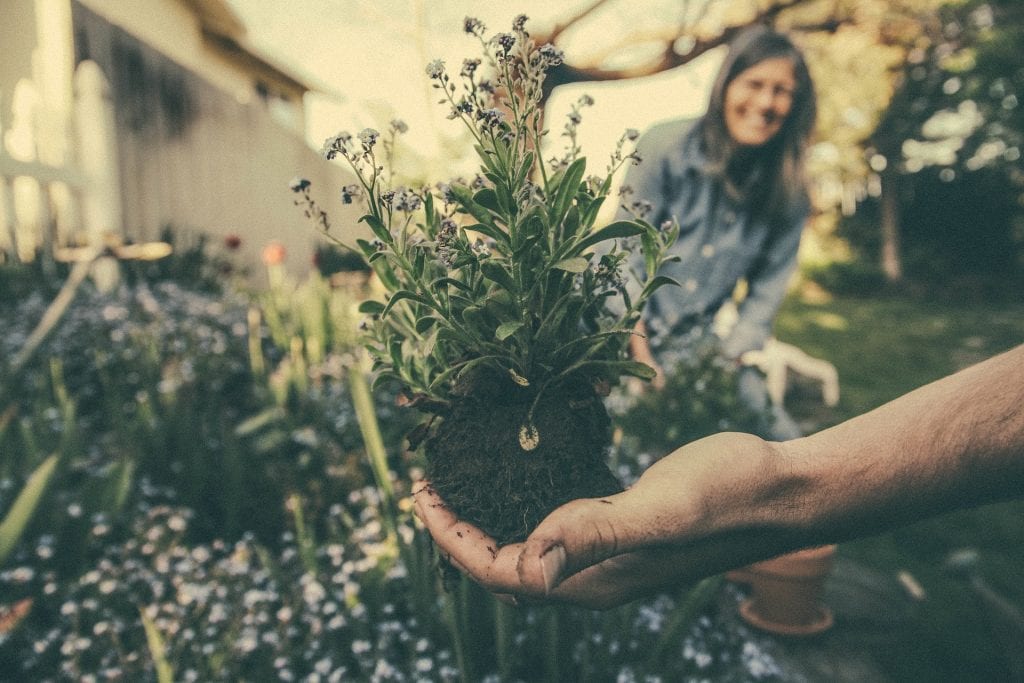5 Tips for Creating a Bee Friendly Garden

Why Gardens Matter
Spring is ALMOST upon us! And if you’re like me, you can’t wait to get your hands dirty in the soil. It’s beautiful how gardens can make up epic proportions of green space. As mentioned in our previous blog, having a garden is not fjust for country folk – gardens today can be found at the heart and center of some of our busiest metropolises and are vital for urban wildlife; including our beloved beeswax. In turn, “by creating bee-friendly spaces in our gardens, we can support a vulnerable population while enjoying better harvests.”
Designing a Bee-Friendly Garden
Tip 1: Choose Plants Bees Love
Bees consume only two main things (I’m sure you could guess them): nectar and pollen. Nectar is LOADED with sugar and is their main source of energy. Pollen provides bees with their proteins and fats.
Bees are wild, aren’t they? They also love wildflowers. Native wildflowers supply bees with an intentional source of both pollen and nectar. Simply put, you must know that native flowers/plants will attract native bees and exotic flowers/plants will attract honeybees.
In order to make it a bit easier for a landing pad AND to access the inner part of the flower, plant single flowers. Flowers that have a single ring of petals versus a double flower (double ring of petals). They actually provide more nectar and pollen and bees won’t have trouble making their way to the inner portion of the flower! Win, win.
Bees are a bit choosy when it comes to their favorite color of flower. Their favorite colors include:
Blue
Purple
Yellow
White
If you plant them in clumps, they are more likely to find them and have at the pollen!
You want to create an oasis for the bees during different times of the year. Therefore, it’s important to pick flowers and plants that can bloom successfully during ‘bee’ season, which is around March through October. The more variety you add, the bigger diversity the bouquet for your bees will be!
Tip 2: Create a Bee Bath
Although you certainly want to attract bees with an assortment of their favorite colored flowers and plants, you also want to give them a place in the garden to collect water. Besides drinking water to stay hydrated, bees need water to help within their hive. Bringing water back to the hive helps the humidity stay level, keeps the hive nice and cool and assists with the production of honey.
Making a bee bath is actually quite simple. Obviously, our buzzing friends don’t have long legs – so it’s imperative to find a shallow dish that is suitable for them. Examples of items you could use are a small plate, old saucepan or even place a planter pot upside down with a small dish on top. You can be as creative as you’d like! From there, you can put a few large rocks, pebbles or marbles in the dish. These rock mixtures give the bees something to stand on while they drink the water.
Lastly, the bee bath can be placed next to the bees most visited portion of the garden. Preferably protected and shady!
Tip 3: No Pesticides
Urban beekeeping or beekeeping on a small farm or plot of land is undoubtedly a tool to help keep the bee population stay afloat. Using pesticides or any chemical additives in your garden would be a detriment to your bees, as they would not survive. Depleting the bees and playing in to the overall harm of beneficial wildlife.
Without bees, gardeners and farmers alike would experience painful harvests. Save the bees, no pesticides please!
Tip 4: Create a Bee Habitat
Bee hotels are not meant for honeybees. Unlike the honeybee, native bees are solitary and do not nest in colonies. Bee hotels are used for solitary bees to make their nest. Other than honeybees, native bees are among our most important pollinators. Bee hotels are used as artificial nesting sites for the native bee and are typically located near the garden as these bees forage close to their hotel. This will encourage nesting and help pollination for years to come!
Bee hotels are constructed in many shapes and sizes. There are starter kits available for purchase or you can make your own! You can use wood from free lumber, logs, or wood scraps. Regardless, you want to make sure holes are dug 3-6 inches deep in the wood. The deeper the hole, the more offspring they will produce.
Tip 5: Weeds are Friends
Do you have a dandelion infestation? Good! Don’t up root these nectar filled weeds. Instead of thinking of a dandelion as a weed, let’s shift the mindset. Dandelions act as wildflowers for our brilliant bees. Along with humans, bees consider dandelions to be a popular foraged item.
Next time you’re thinking of getting rid of them, leave them! Bees will make the most of their presence.
